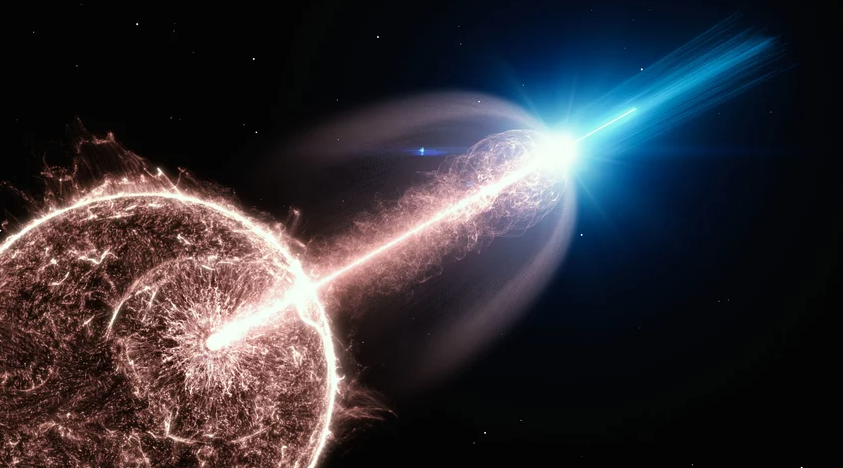
Phd Thesis
Site: Merate (LC)
Duration
3 years
Tutors
Lara Nava, Giancarlo Ghirlanda, Om Sharan Salafia
Contact
lara.nava AT inaf.it
Description
Background: Gamma Ray Bursts signpost the death of very massive isolated stars or the merger of binary compact objects (hosting at least a neutron star). They are produced by the formation of a stellar mass black hole – accretion disk system which powers bipolar relativistic jets.
GRBs are the most luminous transient sources in the universe and are currently detected up to redshift 9.2.
Their short gamma ray emission is accompanied by a long lasting emission component spanning over the entire electromagnetic spectrum and currently detected from the radio band to tera-electron volt energies, so called afterglow emission.
This emission is produced by the deceleration of the GRB jet which expands into the surrounding medium.
The production of weakly magnetized highly relativistic shocks is the key to produce the observed afterglow emission.
In turn the study of the afterglow provides unique clues on the nature of the dissipation mechanism, on the shock acceleration physics and on the jet composition and structure.
Despite hundreds of GRBs afterglows have been observed, the physical parameters derived so far pose several challenges for the theoretical interpretation.
In particular, sparse and sometimes contradictory results may arise from the modeling of the afterglow emission with models developed independently by different groups.
On top of this is the possible non homogeneous analysis of available data sets (e.g. host and dust absorption correction).
Activity: The theory of the afterglow emission has now reached a quite general consensus and the best approach to understand the afterglow physics is to model existing GRB observations.
This requires the construction of an afterglow emission model with the state of the art ingredients which include the dynamics of the jet and the radiative processes.
The systematic analysis of a well selected sample of GRBs will provide clues on the physical parameters of the emission region.
Together with the theoretical activity, the candidate will approach the collection and treatment of published data of individual GRBs and the analysis of high energy public data of the Fermi Large Area Detector (LAT) data.
During the PhD the candidate can be involved in the analysis and interpretation of newly discovered GRBs which is one of the main activities of the proposing group.
She/he will have the opportunity to interact with international collaborations and lead key papers on new events.
These activities may include the analysis and interpretation of new joint detection of gravitational wave events and their associated GRB prompt and afterglow emission or the study of GRBs detected up to the tera-electron volt range by Cherenkov telescopes.
The candidate may also be involved in predictions for next generation instruments/satellites devoted to the multi-messenger astrophysics.
Crediti immagine: DESY, Science Communication Lab.
